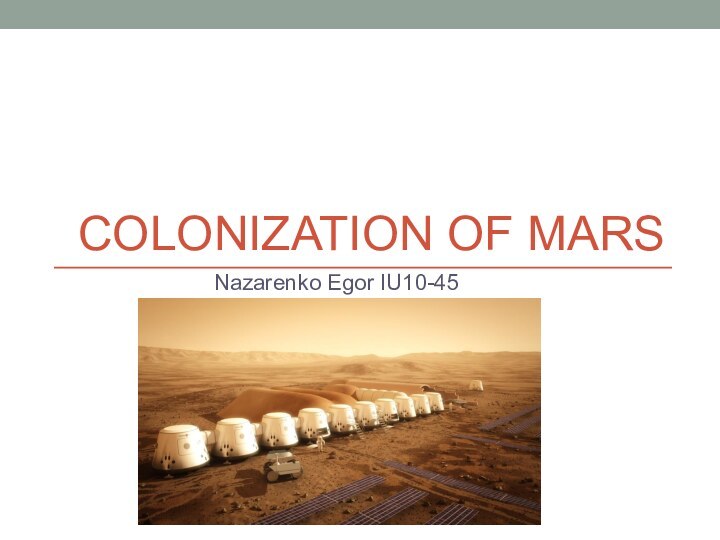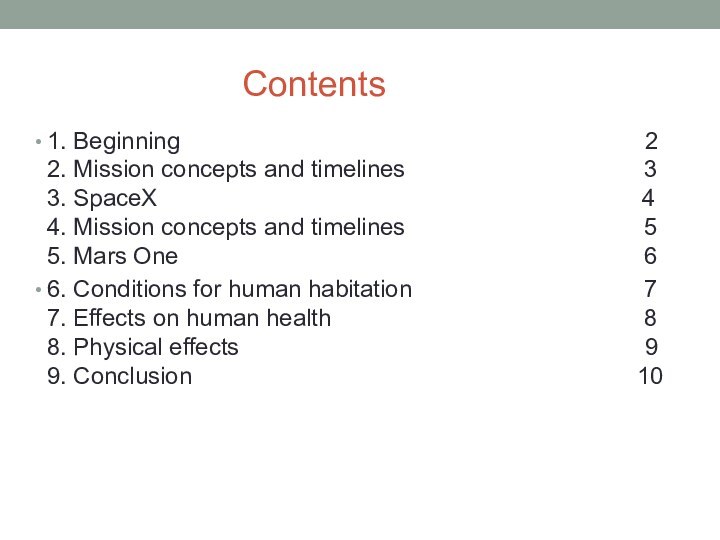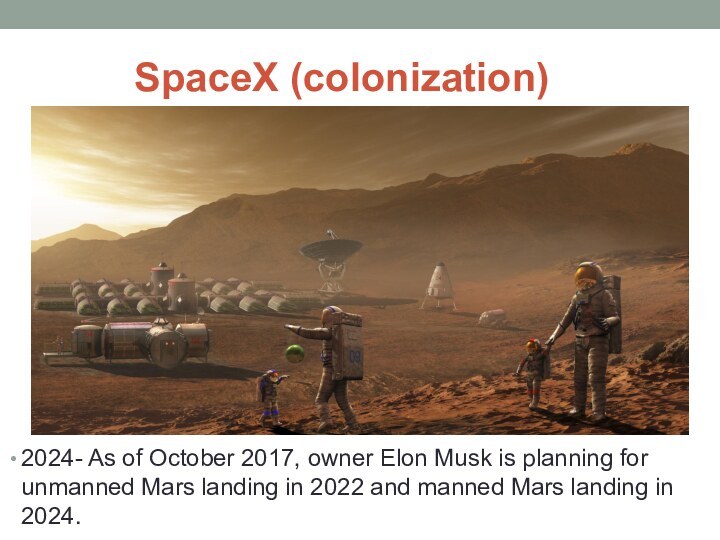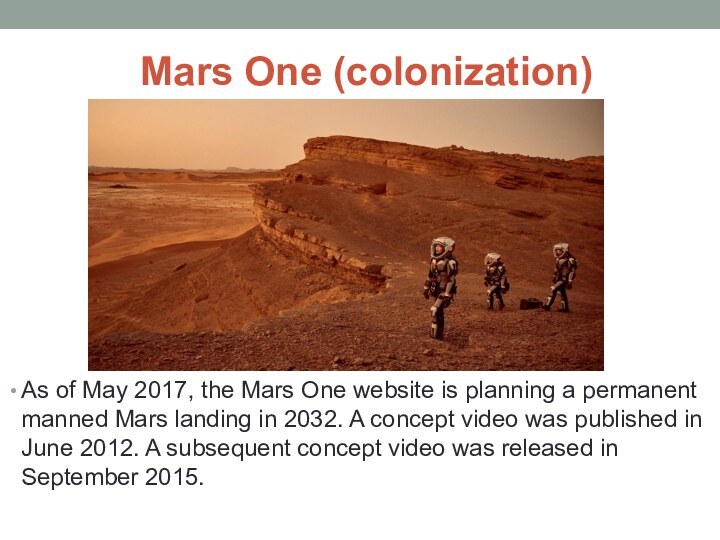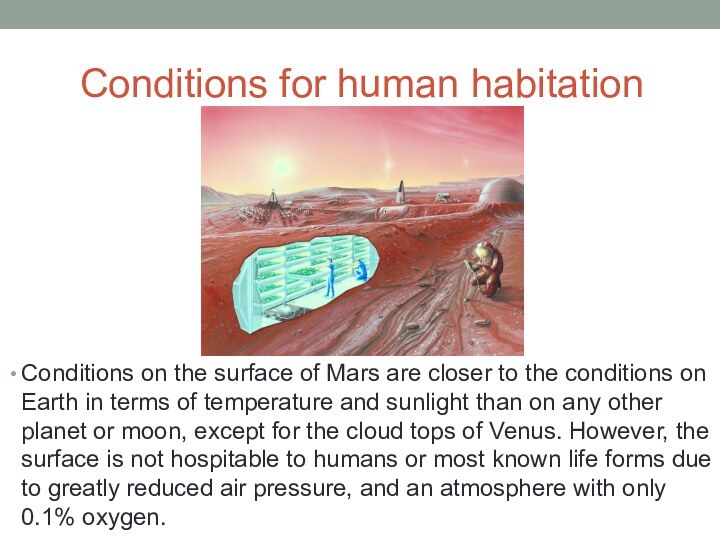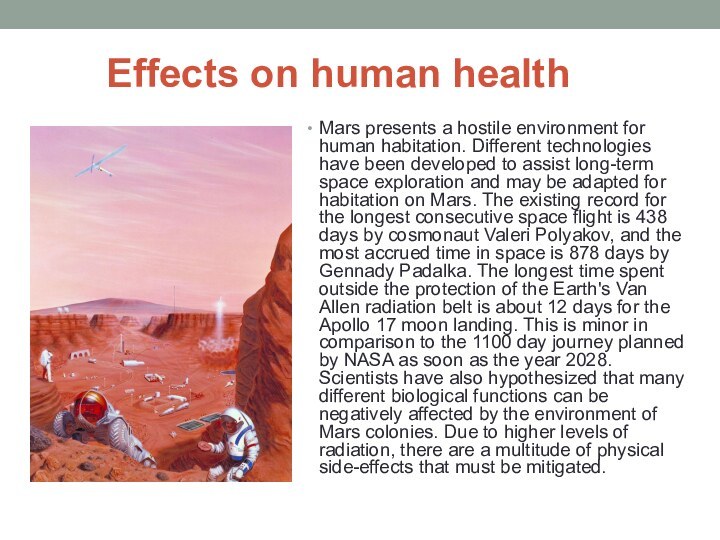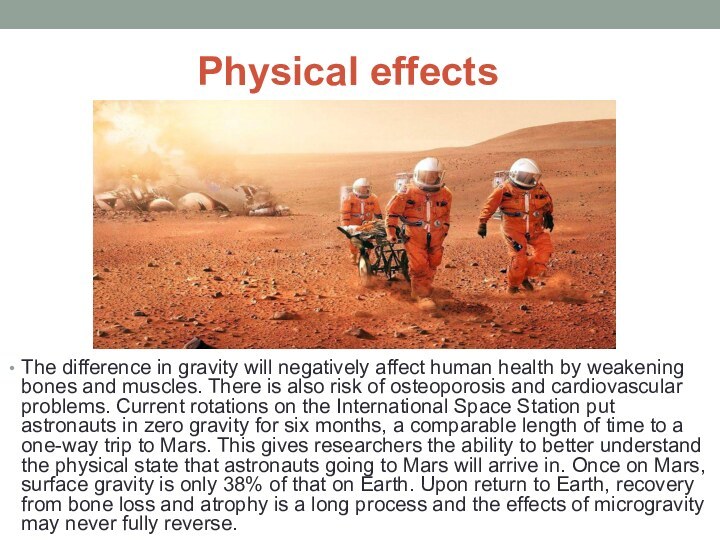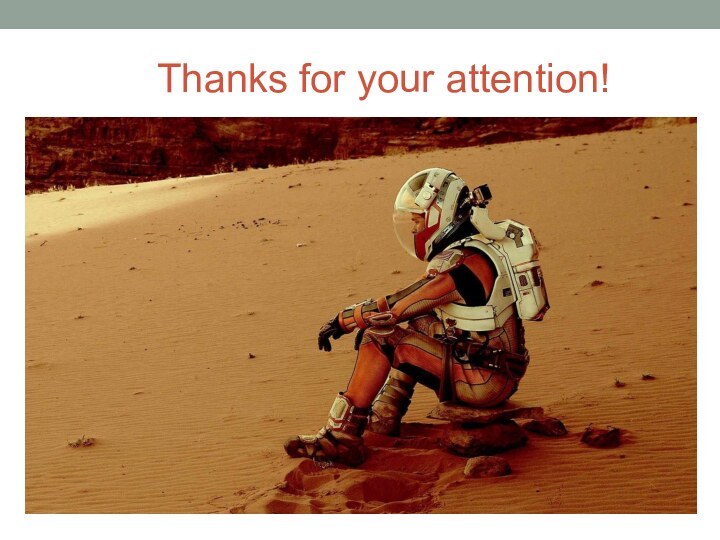Слайд 2
Contents
1. Beginning
2
2. Mission concepts and timelines 3
3. SpaceX 4
4. Mission concepts and timelines 5
5. Mars One 6
6. Conditions for human habitation 7
7. Effects on human health 8
8. Physical effects 9
9. Сonclusion 10
Слайд 3
Beginning
Mars is the focus of much scientific study
about possible human colonization. Mars' surface conditions and past
presence of water make it arguably the most hospitable planet in the Solar System besides Earth.
Слайд 4
Mission concepts and timelines
All of the early human
mission concepts to Mars as conceived by national governmental
space programs—such as those being tentatively planned by NASA, FKA and ESA—would not be direct precursors to colonization. They are intended solely as exploration missions, as the Apollo missions to the Moon were not planned to be sites of a permanent base.
Colonization requires the establishment of permanent bases that have potential for self-expansion. A famous proposal for building such bases is the Mars Direct and the Semi-Direct plans, advocated by Robert Zubrin.
Слайд 5
SpaceX (colonization)
2024- As of October 2017, owner Elon
Musk is planning for unmanned Mars landing in 2022
and manned Mars landing in 2024.
Слайд 6
Mars One (colonization)
As of May 2017, the Mars
One website is planning a permanent manned Mars landing
in 2032. A concept video was published in June 2012. A subsequent concept video was released in September 2015.
Слайд 7
Conditions for human habitation
Conditions on the surface of
Mars are closer to the conditions on Earth in
terms of temperature and sunlight than on any other planet or moon, except for the cloud tops of Venus. However, the surface is not hospitable to humans or most known life forms due to greatly reduced air pressure, and an atmosphere with only 0.1% oxygen.
Слайд 8
Effects on human health
Mars presents a hostile environment
for human habitation. Different technologies have been developed to
assist long-term space exploration and may be adapted for habitation on Mars. The existing record for the longest consecutive space flight is 438 days by cosmonaut Valeri Polyakov, and the most accrued time in space is 878 days by Gennady Padalka. The longest time spent outside the protection of the Earth's Van Allen radiation belt is about 12 days for the Apollo 17 moon landing. This is minor in comparison to the 1100 day journey planned by NASA as soon as the year 2028. Scientists have also hypothesized that many different biological functions can be negatively affected by the environment of Mars colonies. Due to higher levels of radiation, there are a multitude of physical side-effects that must be mitigated.
Слайд 9
Physical effects
The difference in gravity will negatively affect
human health by weakening bones and muscles. There is
also risk of osteoporosis and cardiovascular problems. Current rotations on the International Space Station put astronauts in zero gravity for six months, a comparable length of time to a one-way trip to Mars. This gives researchers the ability to better understand the physical state that astronauts going to Mars will arrive in. Once on Mars, surface gravity is only 38% of that on Earth. Upon return to Earth, recovery from bone loss and atrophy is a long process and the effects of microgravity may never fully reverse.
